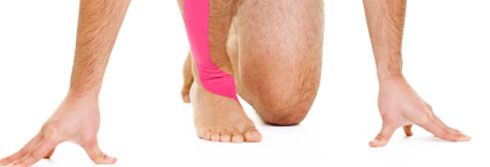
Shoulder Pain
Normal shoulder function is essential for many popular sports and shoulder dysfunction causes significant impairment of everyday quality of life. In recent years there have been many advances in understanding the abnormalities underpinning shoulder pain and in new treatments for shoulder problems.
Stockport Physio has extensive experience in the design and delivery of specific rehabilitation programs for the shoulder complex. We have a practical approach to shoulder pain which involves narrowing the problem down into one or more of the following "categories":
- Rotator Cuff
- Anterior Instability
- Posterior Instability
- AC Joint
- Referred Pain
- Shoulder Injury Treatment
- Shoulder Injury Prevention
Rotator Cuff
The rotator cuff is a group of four muscles that lift the shoulder up above the head and rotate it toward and away from the body. These muscles can be affected in a variety of ways such as tendonitis, a tear, impingement of the tendon or even irritation due to instability of the humerus (arm bone) in the socket. Rotator cuff tendinopathy is a common cause of shoulder pain and impingement in athletes. In this condition the rotator cuff tendons become swollen. The tendiopathy may be a result of overuse or faulty biomechanics or alternatively result from excessive load due to altered shoulder mechanics. Freestyle and butterfly swimmers are particularly liable to rotator cuff injuries. The patient with rotator cuff symptoms complains of pain with overhead activities such as throwing, swimming and overhead shots in racquet sports. There is often also a "painful arc" when the arm is taken away from the side between 70 deg and 120degs.
Treatment for these conditions can involve strengthening, stopping the aggravating action, taping techniques, acupuncture, hands-on methods by a physiotherapist, and many other modalities. Treatment is "two-pronged" and initially aims to decrease the swollen, painful rotator cuff tendons with massage and mobilisation, while at the same time correcting the associated and often causative abnormalities. This includes strengthening muscles around the scapula (shoulder blade) and strengthening the rotator cuff muscles themselves. Shoulder instability may be anterior (forward), posterior (backwards), interior (downwards) or multidirectional.
Anterior Instability
Anterior instability may be post traumatic, as a result of an acute episode of trauma causing anterior dislocation, or atraumatic as a result of gradual stress. Surgery is often required to repair the damage caused by a traumatic dislocation. Following surgery it is vital that a personalised rehabilitation program based on sound time frames and guidelines is followed. Atraumatic instability is usually treated with an intensive rehabilitation program.
Posterior Instability
Posterior instability is most commonly seen in athletes and is atraumatic. Most cases are treated conservatively by strengthening the posterior stabilising muscles. Multidirectional instability is a combination of two or three instabilities and is usually of an atraumatic nature often associated with generalised ligamentous laxily throughout the body. However it may also result from repetitive trauma. Treatment is normally conservative and involves strengthening of the shoulder stabilisers.
Our principles of rehabilitation rely on an accurate diagnosis and a belief in the importance of integrating the whole body into rehabilitation through the retraining of stabilising muscles and more specific shoulder stability muscles. The basic principles of scapulo-thoracic stabilisation, closed chain rehabilitation, early achievement of 90 degrees abduction (where appropriate), rotator cuff strengthening, plyometrics, proprioception and end range functional rehabilitation are creatively followed. Our programmes are kept as functional and specific to the patient's lifestyle and surgical procedure as possible through the inventive use of treatment adjuncts such as Swiss balls, medicine balls and rubber tubing. Our ability lies in delivering to our patient's modern variations of traditional exercises and an ability to evaluate and integrate new research, into our already proven programs.
Protocols have an important role throughout a rehabilitation program. It is however the ability to constantly reassess strength versus range of motion balances and address the specific needs of the patient in conjunction with the surgeon, that allow our patient to obtain the strength and stability they require to return to full health and function sooner.
AC Joint
The AC joint is a common site of injury in athletes who fall onto the point of the shoulder. Stockport Physio may strap these injuries in the initial stages before embarking on a structured mobilising and strengthening programme.
Referred Pain
The shoulder and upper arm are common sites of referred pain. The pain perceived by the patient may result from local abnormalities, referred pain or both. The joints of the neck and upper spine frequently refer pain to the shoulder region. Treatment involves mobilisation and manipulation of the joints that are referring pain, massage to involved muscles and stretching and strengthening exercises for the nerves and muscles associated with the referred pain.
Shoulder Injury Treatment
Shoulder injuries are treated in some of the following ways:
- ICE in the early stages
- Maintenance of range of movement (ROM)
- Non steroidal anti-inflammatory drugs
- Avoidance of aggravating movements
- Physiotherapy - shoulder injuries respond well to the early intervention of physiotherapy
- Advice on graded exercise programme, posture re-education
- Ultrasound / interferential
- Massage
- Strapping
Surgery sometimes is indicated and a physiotherapist would suggest a referral and consultation with an orthopaedic consultant if:
- A complete tear is suspected
- Pain is not responding to treatment
Shoulder Injury Prevention
- Stretching exercises of the shoulder in warm up and warm down
- Strengthening of the rotator cuff and surrounding musculature
- Specified throwing/serving training
- Decreasing explosive nature of action
- Good posture of the shoulder girdle and correct rhythm though movement
Shoulder injuries left untreated can give secondary problems such as a frozen shoulder and this can take from 18 months to 3 years to resolve.
Book now to arrange an immediate appointment
To arrange an appointment or to speak to a physiotherapist, please call our friendly reception staff on 0161 883 0640 or email office@stockportphysio.co.uk

